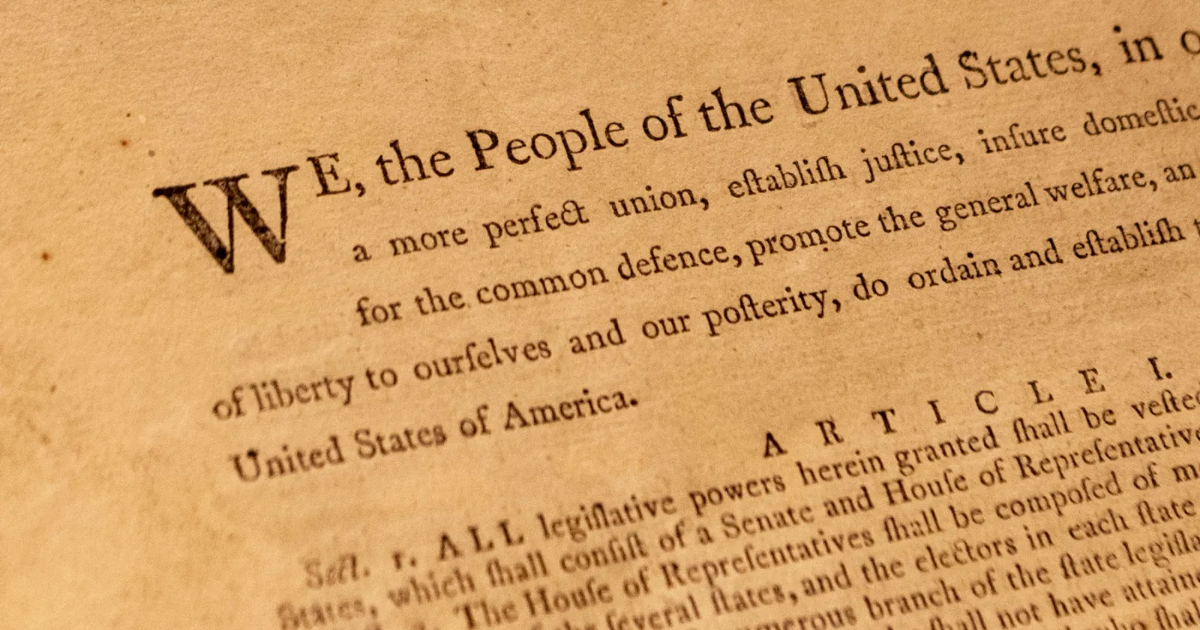Donald Trump is still trying to take over the Library of Congress — but the national library already, apparently by accident, modified its online copy of the U.S. Constitution to remove the president’s least favorite part: the provision that guarantees people’s right to challenge their detention and demands the government justify their confinement.
White House Deputy Chief of Staff Stephen Miller has publicly floated the idea of suspending habeas corpus to aid the president’s efforts to arrest and deport immigrants: “The writ of habeas corpus can be suspended in a time of invasion, so that is an option we’re actively looking at,” Miller said in May.
Homeland Security Secretary Kristi Noem, who’s helping lead Trump’s mass deportation campaign, that month tried to claim that habeas corpus is “a constitutional right that the president has to be able to remove people from this country” — which is effectively the opposite of what habeas corpus means.
Earlier in the month, Trump was asked about due process, and whether as president he has an obligation to uphold the Constitution. “I don’t know,” he replied.
Within the past few weeks, Section 9 from Article 1 of the Constitution — which states, “The Privilege of the Writ of Habeas Corpus shall not be suspended, unless when in Cases of Rebellion or Invasion the public Safety may require it” — disappeared from the Library of Congress’ Constitution Annotated webpage.
By this morning, officials in Trump’s government were quietly telling staff that the deletions were the result of a technical “glitch,” sources familiar with the matter say. As a result, personnel scrambled to fix the issue, figure out how exactly it happened, and also review other parts of the website to see if there were any other conspicuous deletions.
Some federal staffers raised their eyebrows at the blame-a-glitch explanation, given the apparently coincidental nature of the deletions affecting sections of the Constitution that the second Trump administration is openly working so hard to shred. “Funny coincidence,” one federal employee who was dealing with this situation tells Rolling Stone dryly.
The Library of Congress posted on X this morning that the deletion was the result of a “coding error.”
“It has been brought to our attention that some sections of Article 1 are missing from the Constitution Annotated website,” the library wrote. “We’ve learned that this is due to a coding error. We have been working to correct this and expect it to be resolved soon.”
The website added a banner stating: “The Constitution Annotated website is currently experiencing data issues. We are working to resolve this issue and regret the inconvenience.”
By this afternoon, the deleted portions of the Constitution had been added back to the webpage. “Due to a technical error, some sections of Article 1 were temporarily missing on the Constitution Annotated website. This problem has been corrected, and the missing sections have been restored,” the Library of Congress tells Rolling Stone in an email.
It should be noted that simply deleting sections of the U.S. Constitution on a webpage — for an institution that isn’t even the official custodian of the Constitution — doesn’t change American law. But no matter what the document does or doesn’t say, the president and his senior appointees have made clear their intention to violate the Constitution as best they can.
The modification to the Constitution website comes as Trump attempts to seize control of the Library of Congress — even though the agency is technically part of the legislative branch. It functions as Congress’ research arm, while also maintaining the world’s largest collection of books, manuscripts, maps, photographs, and recordings.
In May, Trump announced he was firing Carla Hayden, the librarian of Congress, before the end of her 10-year term, and he moved to replace her with Deputy Attorney General Todd Blanche, who previously served as Trump’s personal attorney.
After a judge refused to block Hayden’s termination, she filed an appeal last week to the U.S. Court of Appeals for the District of Columbia Circuit.
Update: This piece has been updated to include comment from the Library of Congress and to note that the apparent technical error has been fixed.
